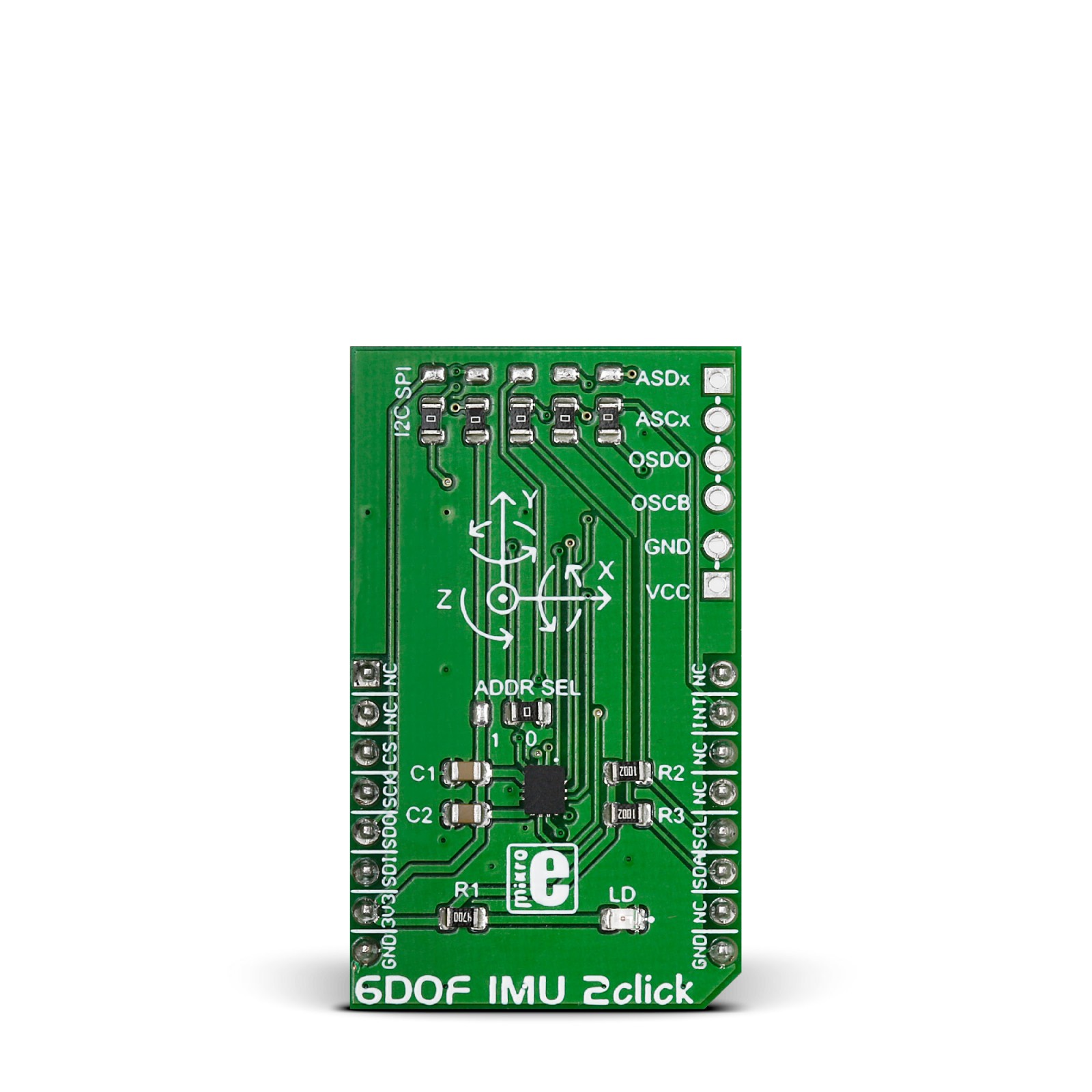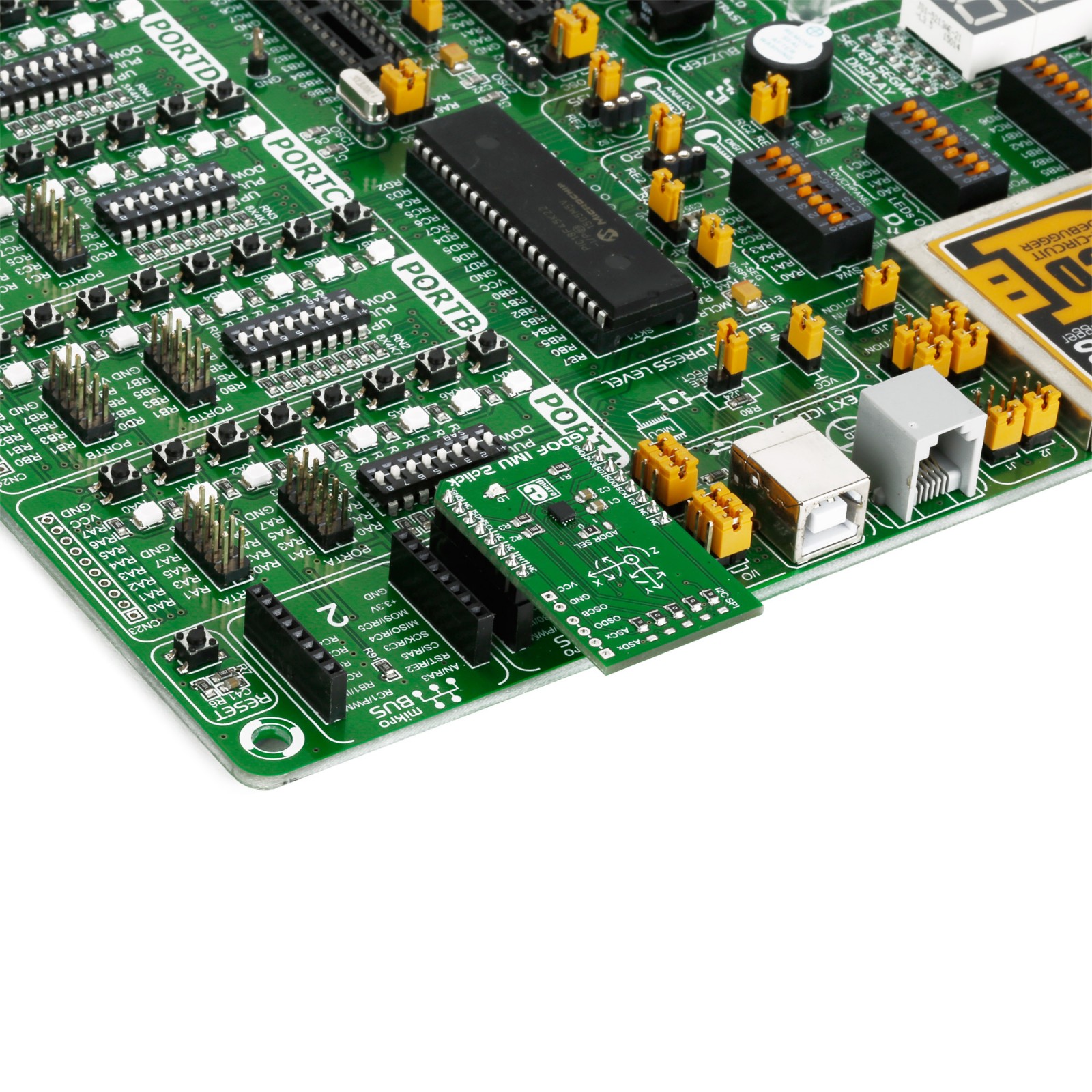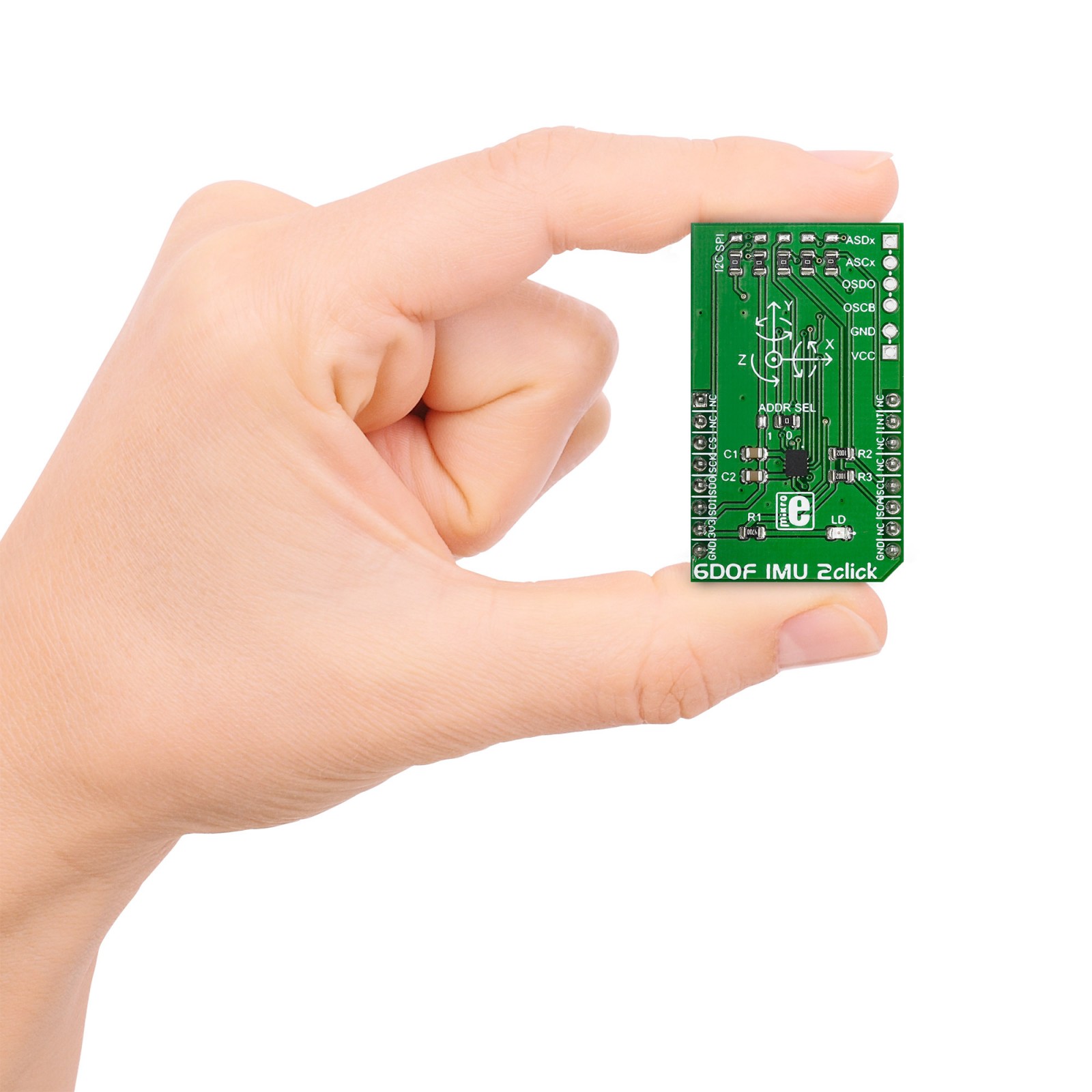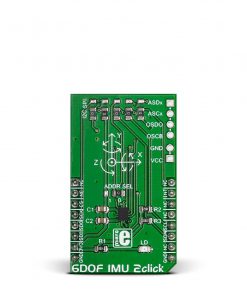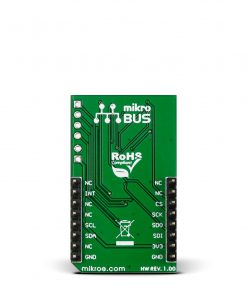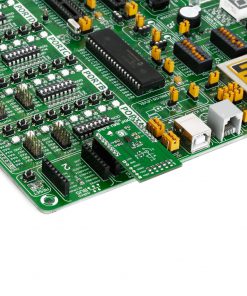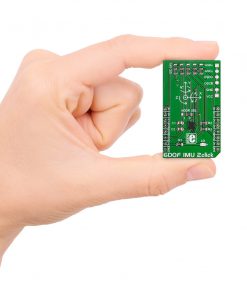6DOF IMU 2 Click
R555.00 ex. VAT
6DOF IMU 2 Click is a compact add-on board for enhancing hardware prototypes with 6DOF functionality (6 degrees of freedom). This board features the BMI160, a small low-power inertial measurement unit (IMU) from Bosch Sensortec. It combines a state-of-the-art 3-axis low-g accelerometer and a low-power 3-axis gyroscope designed for 6-axis and 9-axis applications (additional magnetometer connection). The BMI160 also includes a built-in power management unit (PMU) for advanced power management and power-saving modes, as well as an allocated FIFO buffer of 1024 bytes for handling external sensor data. This Click board™ makes the perfect solution for the development of applications like tilt sensing, navigation, orientation measurement, platform stabilization, robotics, game controllers, remote controllers, pointing devices, and many more.
6DOF IMU 2 Click is supported by a mikroSDK compliant library, which includes functions that simplify software development. This Click board™ comes as a fully tested product, ready to be used on a system equipped with the mikroBUS™ socket.
Stock: Lead-time applicable.
| 5+ | R527.25 |
| 10+ | R499.50 |
| 15+ | R471.75 |
| 20+ | R453.99 |

